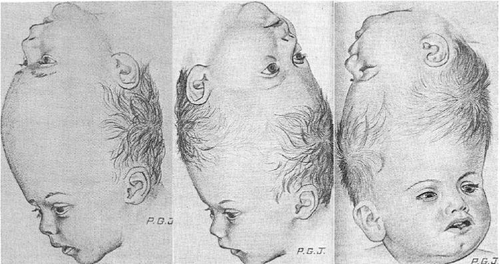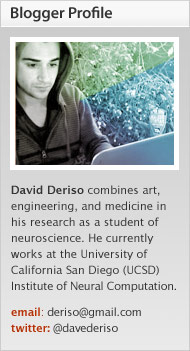« Prev Next »
When I share a thought with you, I encode the contents of the idea into a transmittable medium called language. When you read the idea, you decode the language --and hopefully like the thought of it. But in some cases, the encoding and transmission steps are missing, along with the element of free will for both parties to share the thought. Split-brain studies get all the attention, but no one ever talks about 'shared' brains. Here, we discuss the interesting condition of craniopagus, twins conjoined at the brain.
To approach this topic from a scientific perspective, we should set a few ground rules. The first is that mind reading does not exist. The construct of a 'mind' is actually an emergent property of a complex neural architecture that cannot exist without its underlying constistuent neurons --and rule two is that reincarnation is exempt from this discussion. Furthermore, alterations to populations of these neurons lead to alterations in the dynamics of the mind (see the LSD post, or look up the famous case of Phineas Gage).

The third is that all 'thoughts' are not conscious, or even in the form of words or picture. Neurons transmit information in a variety of ways. The most common form is through neurotransmitters released across synaptic clefts, but this alone is not enough. The brain is a complex, and highly parallel, processor with many levels of organization, each with its own emergent properties. At the subcellular level, neurons can have local concentrations of key proteins that differentially trigger biochemical cascades depending on the state of the cell and incoming activity (we can measure this level with optogenetics). There are also complex neuron-neuron temporal dynamics that relay information through the rate of action potentials (we can measure this level with electrodes and patch claps). Groups of neurons also have unique temporal dynamics that represent states through the synchrony of population activity, where thoughts are said to exist somewhere within the oscillations (we can measure this level with EEG, MEG, and FMRI). While the ability to measure any of these levels is useful for studying changes in activity, the recordings are not sufficient for representing how the ingredients interact to form the spicy seafood gubo we call a thought. Ergo, mind reading is not achievable through synthetic mechanisms.
But what about organic means? Throughout history, there have been cases of craniopagus, however the condition is extremely rare and has an occurrence rate of just 0.6 per million births. While I won't delve into the detailed etiology of craniopagus, an extremely thorough article by Browd, Goodrich, and Walker (2008) describes the condition in great detail, along with the difficult process of surgical separation.
A particularly unique case of craniopagus has recently been presented of two Canadian four-year-old sisters. Unlike most craniopagus twins who are joined at higher cortical areas, these sisters are joined at a much deeper level, the thalamus. The thalamus is a deeper subcortical structure that regulates the flow of sensory information, like sight and sound, to the rest of the brain through circuits called cortico-thalamic loops. These recurrent loops are a feedback mechanism that allow us to focus on one sense while turning the volume down on others. Because this sensory relay station is cross-wired in these twins, it is quite possible -and even likely- that they share the experience of some senses, and perhaps even a piece of mind.

Although I am not aware of any studies that have been published on these twins, sometimes the scientific process is slower than the popular press --though the slowness is not without good reason. The detailed accounts presented by journalists interviewing the family and physicians are extremely compelling and unique. Until a rigorous scientific treatment of the case is published (in a respectable scientific journal), I encourage you to read the detailed account of Dominus (2011) and decide for yourself, is it possible to share a mind?
References:
Browd, S., Goodrich, J.T., & Walker, M.L. (2008). Craniopagus twins. Journal Of Neurosurgery Pediatrics, 1(1), 1-20.
Dominus, S. (2011, May 29). Inseparable. The New York Times Magazine, 28-33.
Figure 2: Excerpt from Browd, S., Goodrich, J.T., & Walker, M.L. (2008): "Drawings showing 3 variations of vertical craniopagus based on varying degrees of rotation of 1 head in relation to the other. Left: Type I vertical craniopagus twins are facing in the same direction. Center: Type II twins have faces on opposite sides of the conjoined skull, the long axis of 1 head being rotated relative to that of the other through an angle of ≥ 140°. Right: Type III twins have an intermediate angle of rotation of the long axis of 1 head on that of the other. (Reproduced with permission from the BMJ Publishing Group. Reprinted from O'Connell JE: Craniopagus twins: surgical anatomy and embryology and their implications. J Neurol Neurosurg Psychiatry 39:1–22, 1976.)"























This very recent paper [http://dx.doi.org/10.1038/srep00100] should be of interest to you. Be aware, it's pure mathematics so I didn't really understand anything. Maybe you could help me out after you've read it.